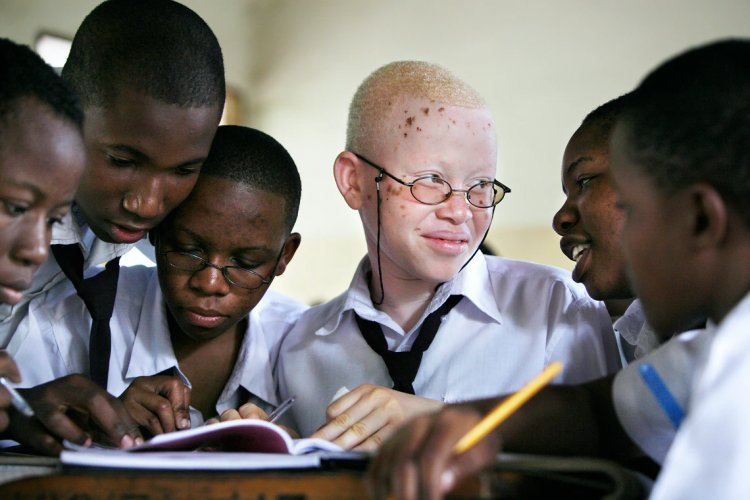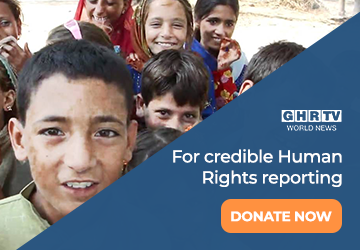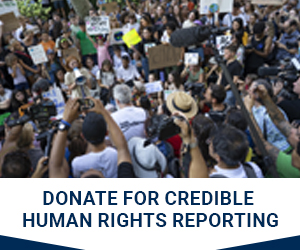The Fight for Survival – The Plight of People with Albinism in Tanzania

Country background
The United Republic of Tanzania, more commonly referred to by its short form, Tanzania, is an East African state spanning 947,300 square kilometers, including the semi-autonomous islands of Zanzibar, Pemba, and Mafia. Tanzania shares a border with eight states overall, namely Burundi, the Democratic Republic of Congo, Kenya, Malawi, Mozambique, Rwanda, Uganda, and Zambia. Its eastern border enjoys an extensive coastline on the Indian Ocean, which spans a total of 1,424 kilometers. Tanzania is also known as the home of Mount Kilimanjaro, the continent's highest point at an impressive height of 5,895 meters[1]. Following the recent passing of late President John Magufuli on the 17th of March 2021, the presidential republic is currently led by President Samia Suluhu Hassan, the former Vice President of Magufuli[2].
As the largest country in East Africa, Tanzania's estimated 61,244,566[3] inhabitants live evenly spread out across its 31 regions, with only three larger urban centers: Dodoma, Mwanza, and Dar es Salaam. The administrative capital of the country, Dar es Salaam, is the most densely populated metropolitan area, with approximately 7,047 million inhabitants as of 2021[4]. Although Dodoma is the designated national capital, Dar es Salaam remains the de facto capital, with most diplomatic and commercial activities taking place there[5].
People with Albinism
As of 2019, it was estimated that there are 4.8 children delivered per the number of women in Tanzania[6], but other predictions suggest that in 2021 this number is closer to 4.45[7]. Of those, approximately one child of every 1,400 births will be born with Albinism[8] [9]. In comparison, in other parts of the world, such as North America and Europe, this ratio is approximately 1 of every 17,000–20,000 births[10]. Albinism is a genetic condition inherited when both parents are carriers of the gene, even if they themselves do not necessarily have Albinism. As a result of this gene, children with Albinism are born with a lack of pigment, meaning they have light-colored hair and skin and often impaired visual abilities[11] [12]. Despite how common having a child with Albinism is in Tanzania, discrimination against them is widespread.
Witchdoctors
Some traditional belief systems, such as witchcraft and superstitions, pose a grave danger to people with Albinism. Even though they are believed to have been cursed upon birth, those committed to mysticism trust that obtaining the body part of a person with Albinism, or sacrificing them, will bring great luck[13]. This belief system fuels a lucrative black market, spearheaded by witchdoctors, who promise to deliver power to those who bring them the body, or body parts, of a person with Albinism. In return for sacrificing an individual with Albinism, the person will receive charms and potions to help them acquire wealth, cure illness or bring good luck[14] . In addition, many also maintain that engaging in sexual relations with a woman with Albinism can cure HIV[15].
Discrimination
Tanzanians with Albinism are commonly called ‘zeru zeru’ in Swahili, meaning ghost[16]. Such name-calling, along with a vast number of other harmful beliefs, is rooted in traditional mysticism. In Tanzania, it is often believed that people with Albinism are immortal and a curse for past wrongdoings by the parents. As such, mothers who give birth to children with Albinism are often abandoned by their partners. However, due to the intense stigma that is implicated in having a child with Albinism, often both parents decide to abandon or end their own child’s life. Those who commit to raising their child despite fears of stigmatization may be overly conscious and keep their child with Albinism sheltered from the world, restricting their social and educational possibilities[17].
On the other hand, children with Albinism who are able to attend school face discrimination by their peers because of their lack of pigmentation. The issues with socialization, in conjunction with the impaired eyesight caused by the gene, many people with Albinism are unable to finish school[18]. This discrimination follows people with Albinism well into adulthood, as many struggle to find employment later on due to their condition being viewed as a disability[19].
A Pressing Issue
As established earlier, Tanzania records one the highest number of children born with Albinism around the globe[20] [21]. Putting the state at the center of the fight for the rights of people with Albinism. Commonly held misconceptions are notoriously slow to change; still, through education, awareness-raising, and advocacy, one can hope that misinformation surrounding people with Albinism will be slowly reduced.
In light of the ritual killings, ensuring the physical safety of people with Albinism is of the utmost importance. At the same time, providing adequate health care, social and economic opportunities are just as necessary to take us one step closer to granting Human Rights to all.
[1] Central Intelligence Agency (2021). World Factbook - Geography. Retrieved April 15, 2021, from https://www.cia.gov/the-world-factbook/countries/tanzania
[2] Al Jazeera. (2021, 03 17). Tanzanian President John Magufuli dies at 61. Al Jazeera. https://www.aljazeera.com/news/2021/3/17/tanzanian-president-john-magufuli-is-dead-vp
[3] World O Meters. (2021, 05 25). Tanzania Population. World O Meters. https://www.worldometers.info/world-population/tanzania-population/#:~:text=The%20current%20population%20of%20the,the%20latest%20United%20Nations%20data.
[4] Central Intelligence Agency (2021). World Factbook - People and Society. Retrieved April 15, 2021, from https://www.cia.gov/the-world-factbook/countries/tanzania
[5] Central Intelligence Agency (2021). World Factbook - Government. Retrieved April 15, 2021, from https://www.cia.gov/the-world-factbook/countries/tanzania
[6] The World Bank. (n.d.). Fertility rate, total (births per woman) - Tanzania. World Bank. https://data.worldbank.org/indicator/SP.DYN.TFRT.IN?locations=TZ
[7] Central Intelligence Agency (2021). World Factbook - People and Society. Retrieved April 15, 2021, from https://www.cia.gov/the-world-factbook/countries/tanzania
[8] Daily News. (2020, 06 16). Discriminating Albinos is Communal Anathema. Daily News. https://dailynews.co.tz/news/2020-06-165ee8fc45edaee.aspx#
[9] Under the Same Sun. (n.d.). What is Albinism? Under the Same Sun. https://www.underthesamesun.com/content/issue#what-is-albinism
[10] Daily News. (2020, 06 16). Discriminating Albinos is Communal Anathema. Daily News. https://dailynews.co.tz/news/2020-06-165ee8fc45edaee.aspx#
[11] National Organization for Albinism and Hypopigmentation. (2020). About Albinism and Hypopigmentation. National Organization for Albinism and Hypopigmentation. https://www.albinism.org/about-albinism/
[12] Under the Same Sun. (n.d.). What is Albinism? Under the Same Sun. https://www.underthesamesun.com/content/issue#what-is-albinism
[13] Under the Same Sun. (n.d.). Superstition & Witchcraft. Under the Same Sun. https://www.underthesamesun.com/content/issue#what-is-albinism
[14] Under the Same Sun. (n.d.). Superstition & Witchcraft. Under the Same Sun. https://www.underthesamesun.com/content/issue#what-is-albinism
[15] Matos, S. (2020, 11 19). The Ghost People of Tanzania. The Orion Magazine. https://orionmagazine.org/article/the-ghost-people-of-tanzania/
[16] Under the Same Sun. (n.d.). Superstition & Witchcraft. Under the Same Sun. https://www.underthesamesun.com/content/issue#what-is-albinism
[17] Under the Same Sun. (n.d.). Discrimination and Rejection. Under the Same Sun. https://www.underthesamesun.com/content/issue#what-is-albinism
[18] Under the Same Sun. (n.d.). Discrimination and Rejection. Under the Same Sun. https://www.underthesamesun.com/content/issue#what-is-albinism
[19] Matos, S. (2020, 11 19). The Ghost People of Tanzania. The Orion Magazine. https://orionmagazine.org/article/the-ghost-people-of-tanzania/
[20] Daily News. (2020, 06 16). Discriminating Albinos is Communal Anathema. Daily News. https://dailynews.co.tz/news/2020-06-165ee8fc45edaee.aspx#
[21] Under the Same Sun. (n.d.). What is Albinism? Under the Same Sun. https://www.underthesamesun.com/content/issue#what-is-albinism

































